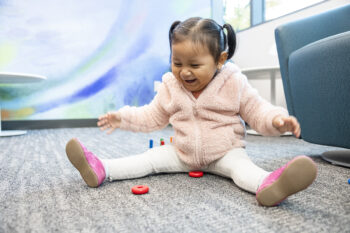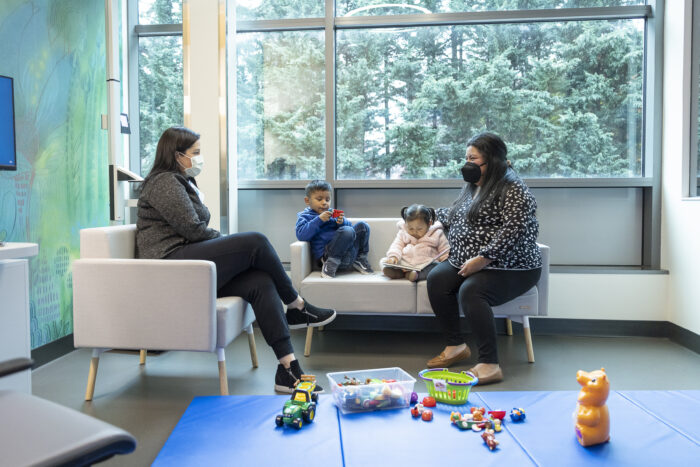
Autism Acceptance Month is a time to foster inclusion of the autism community. This goes beyond simply promoting education about the differences and abilities of people with autism— it is a commitment to understanding, respecting, and celebrating those differences and abilities from across the diverse range of the autism spectrum.
Seattle Children’s Autism Center holds space for the varied truths and narratives that co-exist in the world of autism, and believes that every person with autism has the right to thrive: to be accepted, included, celebrated and to live their best life. Some individuals with autism need high levels of support in their daily lives, while others are able to reach their goals with relative independence. And many others fall somewhere in between—benefitting from support in some areas and independence in others.
All deserve not just awareness of their differences, but true acceptance and inclusion. This requires a shift for all of us—not just in our healthcare and education systems to provide needed supports and therapies to autistic individuals—but in our society as a whole to broaden our appreciation of diverse lived experiences and recognition of the value of neurodiversity.
Appreciating the full range of the autistic experience starts at minimum with recognizing just how many people are living with autism in the U.S. Recent data released in April from the Centers for Disease Control and Prevention (CDC) show the prevalence of autism among children continues to rise, with 1 in 36 8-year-old children identified with autism in 2020.
There is positive news of reduced disparities in autism rates among racially and ethnically diverse groups. Autism rates among Asian or Pacific Islander (3.3%), Hispanic (3.2%) and Black 8-year-olds (2.9%) are now comparable– even perhaps slightly higher- than among white 8-year-olds (2.4%).
In the past, children of color were significantly underdiagnosed with autism compared to white children. “These shifts may reflect improved screening, awareness, and access to services among historically underserved groups,” the CDC press released explained.
“This rise in autism diagnostic rates for children of color points to slow and steady progress being made toward more equitable access to evaluations and diagnoses. There is a growing recognition that autism affects children of all ethnicities, gender identities, socioeconomic backgrounds and more, and we as a healthcare community need to continue to work toward improving access for all.
The latest rates are a sign that the needle is beginning to move,” said Dr. Jennifer Gerdts, psychologist, Seattle Children’s Autism Center.

Seattle Children’s Magnuson, the new location of the Autism Center and Outpatient Psychiatry and Behavioral Medicine, links its autism and behavioral health programs, uniting mental health and developmental experts from across Seattle Children’s to facilitate clinical collaboration and research.
Designed in collaboration with patient families, Seattle Children’s Magnuson was created as a welcoming and inclusive space, allowing for more tailored services for families of neurodiverse children who are historically underserved by our healthcare systems.
Seattle Children’s Magnuson is improving access to care for families of all backgrounds – tailoring diagnostic evaluations for autism to allow more time for families requiring an interpreter, offering a 3-part class series First Steps in Spanish for parents and caregivers of children recently diagnosed with autism.
Additional resources have also been developed and are available in multiple languages, such as a video series El autismo y mi familia: una serie de videos en español, and the “Finding Mental Health Care in Washington State: A Class on Where to Start” class in Spanish, which serves as a resource for parents/caregivers needing help navigating the system for mental healthcare services.
“We have come a long way since the days when individuals with disabilities were hidden from view, but there is still much to be done before people with autism and other developmental disabilities will be fully accepted and included,” said Gerdts.
At Seattle Children’s Autism Center, we are up for this challenge and will continue to dedicate ourselves to this work. We hope you will join us on our journey of acceptance, inclusion, and celebration.
Resources:
- Seattle Children’s Autism Center
- Patient and Family Resources – Autism Center
- How to Get Services at Seattle Children’s Autism Center
- The Autism Blog – (seattlechildrens.org)
- Seattle Children’s Magnuson: Meeting the Needs of our Community
- Alyssa Burnett Adult Life Center
- Giving to Seattle Children’s

